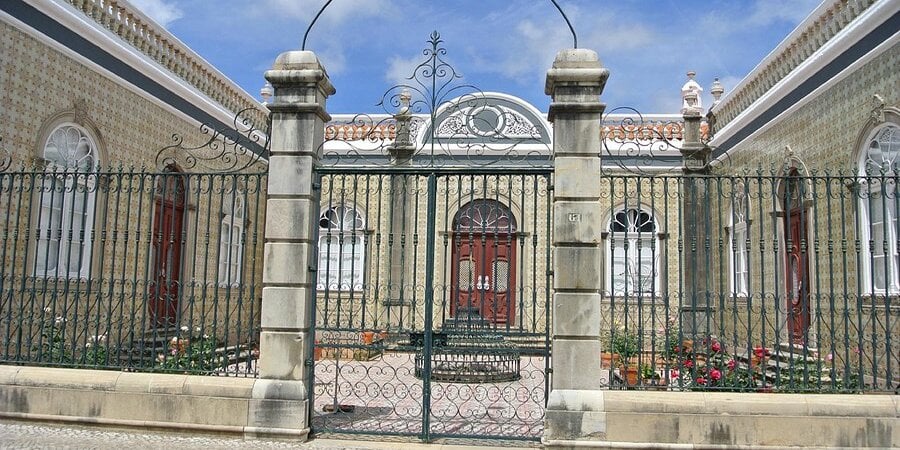Discover Viana do Castelo: A Coastal Gem in Portugal
“Havemos de ir a Viana” – “We shall go to Viana” – sings Amália Rodrigues, the renowned “queen of fado.” Viana do Castelo, a small city on Portugal’s beautiful Green Coast (Costa Verde) along the Camino Portugués, became famous through her music. Whether you’re a fado lover or not, following Amália’s advice and visiting Viana is highly recommended, especially for those walking the Camino de Santiago. Here are five must-see highlights of this charming city.
1. Santa Luzia Basilica: Stunning Views
Panoramic Vistas
The Santa Luzia Basilica is one of the city’s most famous landmarks. Perched on Mount Santa Luzia, it offers panoramic views of the city and coastline. Paris’s Sacré-Cœur Basilica inspires the basilica’s design, though it was built in the early 20th century. The view from the basilica is breathtaking, especially at sunset.
How to Get There
To reach the basilica, take the Santa Luzia Elevator, which transports visitors up the mountain with ease. It’s a convenient way to enjoy the stunning views. From the top, you can see the Lima River, the city, and the Atlantic Ocean stretching out to the horizon.
Religious Heritage of Viana
Viana is also known for its many religious landmarks. The city has beautiful churches, chapels, and convents, reflecting its deep Catholic roots. Key sites include the 16th-century Capela das Malheiras, the 13th-century Capela das Almas, and the baroque Igreja da Senhora da Agonia. The Sé Cathedral, dating back to the 15th century, is another must-see.

2. Rich Architectural Heritage
Civil and Military Architecture
Viana do Castelo is full of beautiful civil and military architecture. The city boasts manor houses, forts, and other grand buildings. Many of the city’s big houses are named after prominent local families, such as Casa de Sá Soutomaior and Casa dos Luna. These 16th-century buildings reflect Viana’s golden age.
The Eiffel Bridge
One of the city’s most famous structures is the Ponte Eiffel, a bridge designed by the same engineer who built the Eiffel Tower. The bridge crosses the Lima River, showcasing the industrial era’s architectural innovation. It’s a great example of 19th-century engineering and adds to Viana’s historical charm.
Pilgrim Hospital
History buffs will appreciate the Hospital Velho, an old pilgrim hospital built in the 15th century. It was once a resting place for travellers on their way to Santiago de Compostela. The building is a fascinating glimpse into Viana’s role in the pilgrimage tradition.

3. Sun, Sea, and Sand: Viana do Castelo’s Seafaring Tradition
Exploring the Beaches
Viana do Castelo has a long seafaring history. Many explorers and traders set off from here to the Americas. Today, visitors can enjoy the beautiful beaches along the Atlantic coast. Many of the beaches have Blue Flag status for their cleanliness and quality.
The Coastal Way
The city is an important stop along the Portuguese Coastal Way of the Camino de Santiago. Pilgrims walking the route can enjoy Viana’s lovely beaches while experiencing its history and culture. Whether you want to relax or explore, Viana’s coastal beauty offers something for everyone.

4. Archaeological Wonders: Discover the Past
Pre-Roman Heritage
If you’re interested in archaeology, visit the Cidade Velha, an ancient Castro or pre-Roman village. This archaeological site, located just outside Viana, is one of the largest in northern Portugal. It offers a fascinating glimpse into the region’s early history and the lives of its ancient inhabitants.
Visit to Santa Tecla
If travelling into Galicia, Spain, don’t miss the Santa Tecla Castro in A Guarda. This site is similar to the Cidade Velha and provides an excellent opportunity to compare two ancient castros in the region.

5. Ethnography and Folklore: The Culture of Viana
Museu do Traje: Vianese Traditions
The Museu do Traje (Museum of Attire) offers a deep dive into Viana’s rich folklore and traditional clothing. Housed in a former Bank of Portugal building, the museum showcases the beautiful Vianese costumes worn during festivals. These costumes play an important role in the city’s cultural identity.
Craft and Tradition
The museum highlights the history of these costumes and the craftsmanship behind them. Traditional Vianese attire is intricate and colourful, often reflecting the region’s rural life and folk traditions. Visiting the museum is a great way to learn about Viana’s unique cultural heritage.

Best Time to Visit and Local Delicacies
Best Time to Visit
The best time to visit Viana do Castelo is in August when the city celebrates the Romaria de Nossa Senhora da Agonia. This festival honours the city’s patron saint and features processions, music, and dancing. It’s a vibrant and colourful celebration that offers a unique look at local traditions.
What to Eat
Viana is famous for its delicious bacalhau (salted cod), prepared in many different ways. Each region of Portugal has its own version of this classic dish, and Viana has a unique take on it. Pair your bacalhau with a glass of Vinho Verde, a light, crisp wine from the region, for an authentic culinary experience.
A City Full of Charm and Beauty
Viana do Castelo is a city that offers something for everyone. It is charming, from its breathtaking views and historical architecture to its beautiful beaches and rich cultural traditions. Whether exploring the city’s religious sites, strolling along the coast, or immersing yourself in local folklore, you will fall in love with this stunning Portuguese destination. Take Amália Rodrigues’ advice and visit Viana—a trip you won’t regret!
For more information about the Camino Portugués or to book your trip, please don’t hesitate to contact us.
